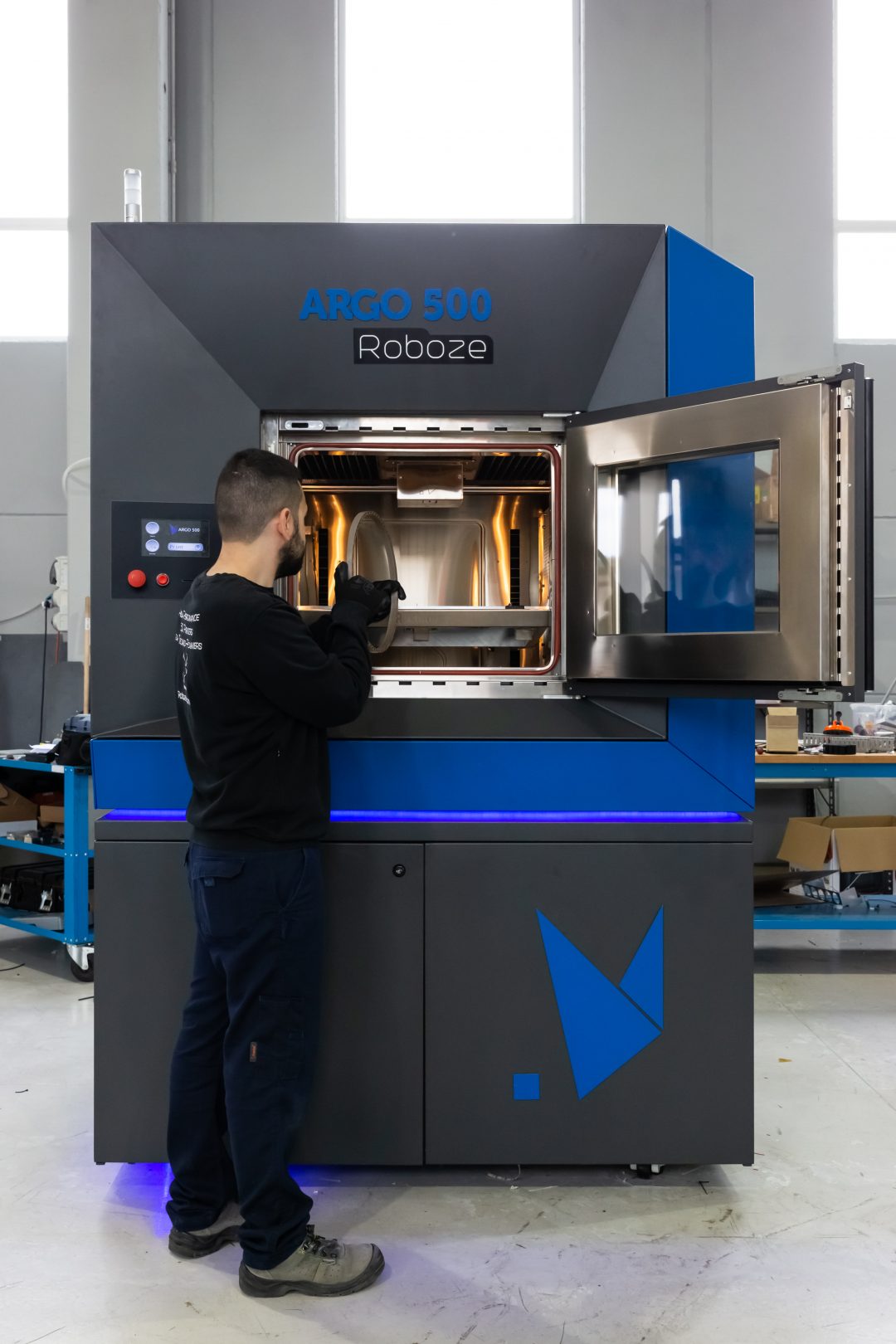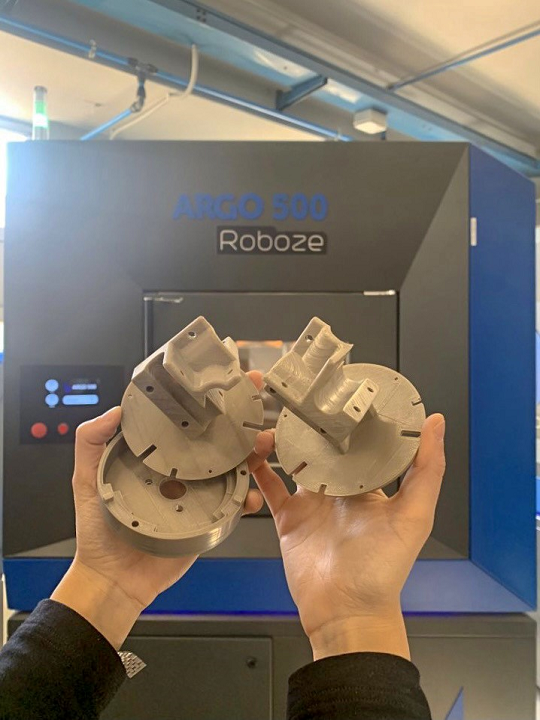Siemens and Roboze have announced that they are collaborating to develop workflows dedicated to the industrialization of 3D printing. This includes an emphasis on expanding the use of the technology in energy, mobility, and aerospace. Though the exact nature of the agreement isn’t fully elucidated, it marks a significant shift for both firms.
Siemens is the largest industrial manufacturer in Europe, with a storied history spanning nearly two centuries and annual revenues totaling €62.3 billion, as of 2021. In contrast, Roboze is a comparatively new firm, established in Italy in 2013. The company has since built itself up into a leader in industrial-grade material extrusion 3D printers, earning such customers as Ducati, GE, and the U.S. Army.
The partners do not exactly clarify their intent except to say that they will work together to “increase the productivity, competitiveness and efficiency of manufacturers that have embarked on the path to the future of industry.” They do mention focusing on “digitalization and automation projects”.
“We have embarked on a path that sees us leading the way with Roboze to increase the production capacities of manufacturing companies around the world,” explains Tim Bell, Additive Manufacturing Business Manager at Siemens. “We have experienced the potential of Roboze’s 3D printing firsthand, so much so that we have chosen to implement their ARGO 500 into our processes. I’m excited to be part of this project as I see ample strategic opportunities for the future of manufacturing.”
“We are excited to announce our new partnership with Siemens, which actually represents another step in our strategy to be closer to the industries we have served for years such as energy, mobility and aerospace.” says Francesco Pantaleone, VP of Business Development of Roboze. “For us, Siemens is an ideal partner to be even more present in these innovative sectors that want to start strategic digital transformation paths.”
Though the details are sparse, the development is a significant one for a number of reasons. To begin, we can see Siemens applying its motion control to Roboze equipment, as we’ve seen with other Siemens partnerships. Or it could be more geared to automation, for which Siemens has many solutions. It may be as simple as integrating Siemens PLM software into a Roboze 3D printing workflow, as occurred between Siemens and Nexa3D. Or it could mean automating various steps in the production chain, such as post-processing or conveyance of parts.
For Roboze, having a partner in one of the world’s largest manufacturers obviously carries a lot of weight. The company has been steadily advancing its way in the industrial material extrusion space, of which Stratasys is the market leader. However, with Siemens as a customer and collaborator, it could begin to overtake the extrusion stalwart.
This is especially true because Siemens is, or was previously, a Stratasys customer. Siemens Mobility has so far used Stratasys machines to 3D print spare parts for its growing rail repair program. If the multinational decides to play favorites and choose Roboze, it could indicate an important loss for Stratasys. However, because Siemens Mobility is a separately managed company, it’s possible that the different divisions have their own agendas.
Additionally, Siemens Energy, which was recently spun out into its own company, has its own additive agenda. The company just launched a 3D printing network called MakerVerse. This could significantly expand its impact in the service bureau space, previously limited to its Materials Solutions 3D printing service. Again, this business operates separately from the larger Siemens conglomerate, but we can imagine some crossover in terms of shareholders.
So, could Siemens help build Roboze up to the point that it competes successfully with Stratasys and then acquire it, like it did with Materials Solutions? Or is it simply content to making Roboze technology more suited to its own production needs? As the partnership advances, hopefully we’ll have a better idea of what the future holds.
Subscribe to Our Email Newsletter
Stay up-to-date on all the latest news from the 3D printing industry and receive information and offers from third party vendors.
Print Services
Upload your 3D Models and get them printed quickly and efficiently.
You May Also Like
Consolidation in AM: How 2025 Is Shaping the Industry’s New Normal
The first half of 2025 has been marked by a clear shift in the additive manufacturing (AM) industry. Companies are no longer just focused on developing new tech by themselves....
Etsy Design Rule Change Reduces Selection of 3D Printed Goods
Online marketplace Etsy has implemented a rule change requiring all 3D printed goods on the site to be original designs. The update to the site’s Creativity Standards states, ¨Items produced using...
U.S. Congress Calls Out 3D Printing in Proposal for Commercial Reserve Manufacturing Network
Last week, the U.S. House of Representatives’ Appropriations Committee moved the FY 2026 defense bill forward to the House floor. Included in the legislation is a $131 million proposal for...
Transforming From Tourist to Native: Duro CEO Michael Corr Explains Why the Company Rebuilt its PLM Software on AI
In these early innings of the AI boom, many market analysts have expressed concern that AI spend has gotten too far ahead of the technology’s proven ability to deliver significant...


































